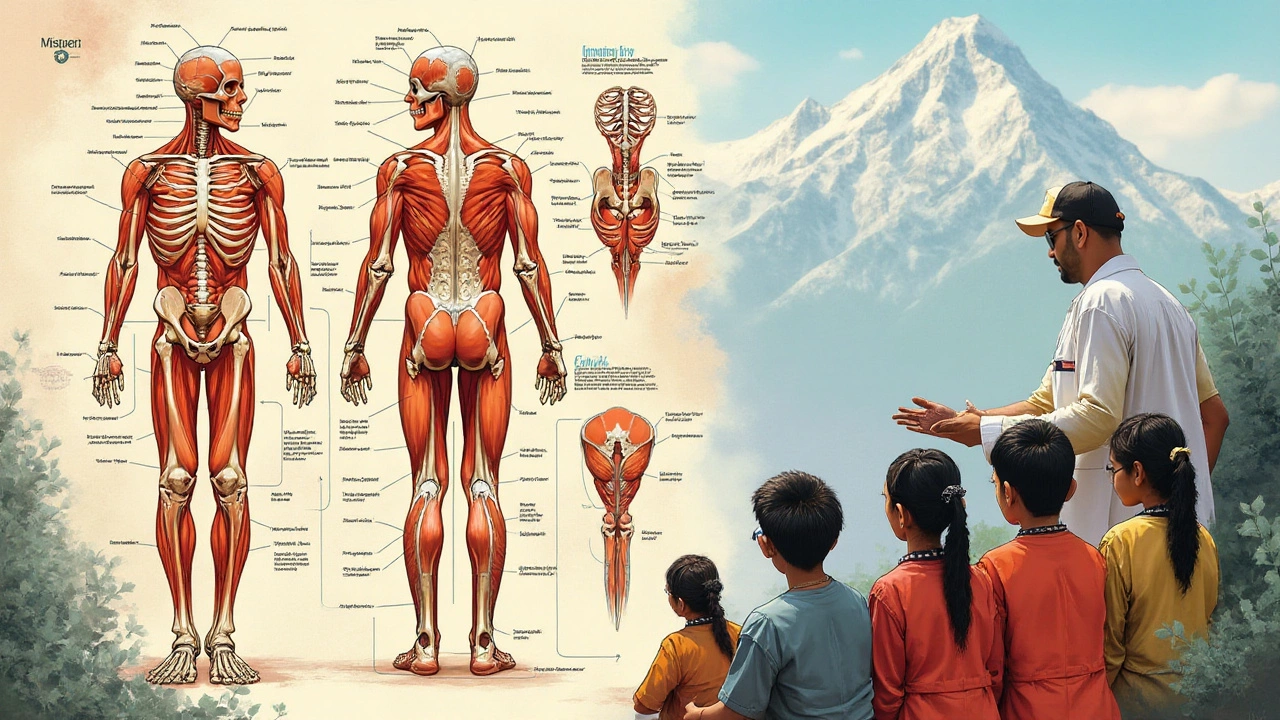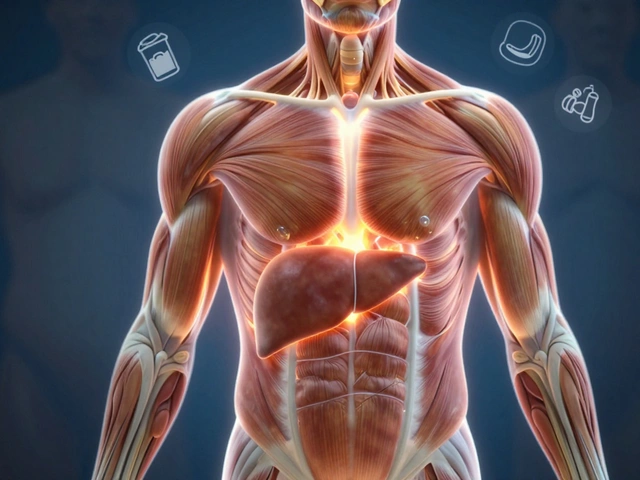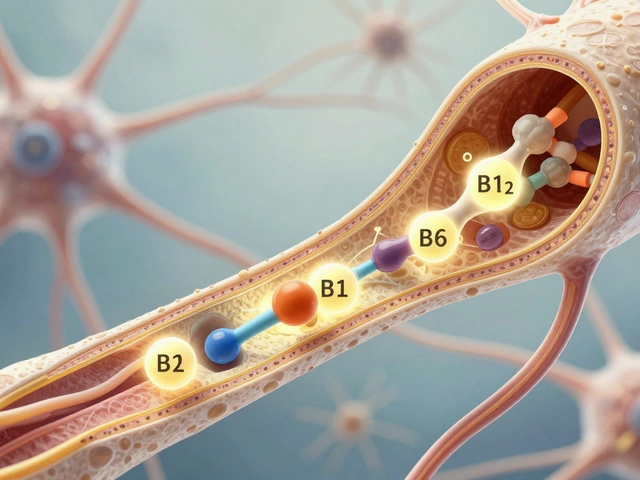When you think about movement, agility, and the ability to perform everyday tasks, your musculoskeletal system plays a crucial role. Orthopedics is the medical field dedicated to diagnosing, treating, and preventing disorders related to this essential system. From sudden injuries like broken bones to chronic conditions such as arthritis, orthopedics covers an extensive range of issues.
Given the significance of the musculoskeletal system in our day-to-day lives, understanding what orthopedics covers can empower you to make informed health decisions. In this exploration, you'll uncover details about common orthopedic conditions, the latest treatment technologies, and preventive measures you can take. Dive in to learn how to support your musculoskeletal health and choose the right care when needed.
- Overview of Orthopedics
- Common Conditions Treated
- Innovative Treatments and Technologies
- Importance of Preventive Care
- Choosing the Right Orthopedic Hospital
Overview of Orthopedics
Orthopedics is a vital branch of medicine that deals with the complex and dynamic musculoskeletal system, which is fundamental for human movement. This field focuses on diagnosing, treating, and preventing disorders that affect bones, joints, ligaments, muscles, and tendons. Each component plays a significant role in giving our bodies structure, stability, and the ability to move freely. A fascinating aspect of orthopedics is its historical roots, which stretch back to ancient times when people first began to understand the anatomy of bones. Today, orthopedics blends ancient wisdom with cutting-edge technology to offer patients comprehensive care.
In modern orthopedics, specialists utilize a multi-disciplinary approach to treat conditions ranging from acute injuries to chronic degenerative diseases. The field has evolved significantly, especially with the advent of advanced imaging techniques like MRI and CT scans that allow for precise diagnosis and targeted treatment plans. Orthopedic surgeons are trained to perform a wide array of procedures, from arthroscopy, a minimally invasive procedure used to diagnose and treat joint problems, to complex total joint replacements. Their expertise ensures that patients receive individualized care that addresses their unique needs.
A particular strength of orthopedic medicine lies in its adaptability and responsiveness to new challenges, such as the rise in sports-related injuries and the increasing prevalence of bone degenerative diseases in aging populations. Data from global health organizations highlights that orthopedic conditions are among the most common reasons for seeking medical care. According to a study by the Global Burden of Disease, musculoskeletal disorders caused about 1.71 billion people worldwide to suffer in 2020. This staggering number underscores the importance of orthopedic interventions in enhancing quality of life.
Orthopedic care does not solely focus on surgical solutions. Non-surgical options like physical therapy, medication, and lifestyle adjustments play a critical role in managing musculoskeletal disorders. Patients often work closely with a team of specialists, including physiotherapists and occupational therapists, to achieve optimal results. This holistic approach is where orthopedics shines, combining precise medical advancements with compassionate patient care to effect meaningful change.
Orthopedic hospitals are at the forefront of these advancements, equipped with state-of-the-art facilities to provide top-notch care. In a rapidly evolving field, staying updated with the latest research and technologies is paramount.
A renowned orthopedic surgeon once noted, "The art of healing lies in supporting the body's natural processes as much as possible." This reflects the ongoing commitment within orthopedics to incorporate evidence-based practices alongside patient-centric care.By understanding the scope and depth of orthopedics, patients can actively participate in their care journey, ensuring that they receive treatments that align with both their medical needs and personal goals.
Common Conditions Treated
When it comes to orthopedics, the range of conditions treated is vast and varied, fundamentally focusing on the musculoskeletal system. This system is integral to our daily functionality, comprising bones, muscles, joints, tendons, and ligaments—each playing a crucial role in maintaining mobility and stability. Let's delve into some of the most common conditions addressed in orthopedic care.
One of the primary conditions is arthritis, affecting millions globally. Patients often experience joint pain, stiffness, and swelling, making movement challenging. Osteoarthritis, the wear-and-tear form, is most prevalent among older adults, while rheumatoid arthritis is an autoimmune disease affecting younger populations. Treatment for arthritis can involve medication, physical therapy, or in some cases, surgery.
The orthopedic field also treats an array of injuries resulting from sports and physical activities. Torn ligaments, such as the anterior cruciate ligament (ACL) rupture, are common injuries among athletes. These injuries often require detailed diagnosis and sometimes surgical interventions to restore function and strength. Fractures, another frequent condition, vary from minor cracks to complete breaks. Treatment strategies for fractures include immobilization with casts or surgical methods like the insertion of rods and pins to ensure proper healing.
Back pain, a condition experienced by many due to poor posture, injury, or degenerative diseases, is another critical area within orthopedics. Conditions like herniated discs or sciatica often necessitate a comprehensive approach, including medication, therapy, and sometimes surgical procedures to alleviate discomfort and restore activity levels. An interesting fact from the American Academy of Orthopaedic Surgeons indicates that nearly 80% of people will experience some form of back pain in their lifetimes.
Orthopedics also encompasses congenital disorders such as scoliosis, characterized by an abnormal curvature of the spine. This condition primarily develops during the growth spurt before puberty, and treatment options vary based on the severity of the curve. Bracing is a common non-surgical approach, while severe cases may require correction through surgery. Similarly, conditions like clubfoot or hip dysplasia often require early intervention for correction and avoidance of future complications.
Tendinitis is another frequent concern, where overuse or injury leads to inflammation of tendons. It's notably common in individuals with repetitive motion activities, such as athletes or musicians. Conservative management with rest, physical therapy, and anti-inflammatory medications usually suffices, but persistent cases may need surgical measures.Considering the array of musculoskeletal disorders addressed by orthopedics, it's crucial for individuals to seek timely advice and treatment. Maintaining bone and joint health is vital for preserving quality of life, particularly as we age.
"The human body is magnificent in its ability to heal; however, conditions like arthritis or ligament injuries remind us how crucial specialized orthopedic care is," says Dr. Jane Blackwell, a renowned orthopedic surgeon.

Innovative Treatments and Technologies
The field of orthopedics has been rapidly evolving, integrating cutting-edge technologies and advanced treatment methodologies to improve patient outcomes. It's an exciting era for both medical professionals and patients as the boundary between traditional medicine and high-tech solutions becomes wonderfully blurred. With the advent of 3D printing and regenerative medicine, the toolkit available to orthopedic specialists has never been more robust. These advancements are not only about acute injury repair but also encompass chronic conditions and preventive care. As research in biomechanics continues to flourish, treatments are increasingly tailored to the individual, optimizing the healing process based on patient-specific factors.
One of the most remarkable innovations in recent years is the development of personalized joint replacements. Thanks to 3D printing technology, custom implants can be created to match a patient's unique anatomy, resulting in better fitting prosthetics and faster recovery times. This personalized approach extends to the printing of surgical guides, which enhance surgical accuracy and efficiency. It's amazing how technology that once seemed like science fiction is now playing a crucial role in surgical rooms worldwide. Regenerative medicine is another promising area, with therapies that use stem cells to regenerate damaged tissues. Such approaches offer the possibility of healing injuries that were previously considered irreversible, changing the landscape of orthopedic care.
The Role of Robotics
Robotic-assisted surgeries are revolutionizing the way complex procedures are conducted. These systems provide surgeons with enhanced precision, flexibility, and control during operations. It's almost like having a second set of hands, engineered for accuracy and detail. A surgeon at the Cleveland Clinic wisely put it,
"Robotics transforms surgery with its precision, leading to quicker recovery and remarkable patient satisfaction."With these robotic systems, surgeons can minimize human error, reduce soft tissue damage, and improve implant placement. As more healthcare facilities adopt robotic systems, patients can expect even safer and more efficient outcomes, redefining expectations about recovery and rehabilitation post-surgery.
The utilization of virtual reality (VR) in orthopedics is also noteworthy. VR platforms are being used for surgical training, allowing students and professionals to practice procedures in a risk-free environment. These immersive experiences help build confidence and skill proficiency, crucial for adapting to today's complex surgical protocols. Moreover, VR is aiding in pain management and rehabilitation, offering patients unique, interactive experiences that contribute to physical therapy and psychological well-being.
Smart Implants and Wearable Tech
Smart implants and wearable technology are at the forefront of orthopedic innovation. These devices are embedded with sensors that provide real-time data on the patient's condition, health metrics, and physical activity levels, allowing for precise monitoring and personalized intervention. For instance, they can alert medical professionals to abnormalities in movement or pressure that could indicate potential complications. Alongside, wearable devices that track rehabilitation exercises ensure adherence to prescribed physical therapy regimens, aiding in faster recovery.
As the field progresses, statistical evidence suggests that technology-driven methodologies lead to higher patient satisfaction rates. One study illustrated below shows the comparative impact of technological interventions in orthopedics:
| Treatment Type | Patient Satisfaction Rate |
|---|---|
| Traditional Surgery | 75% |
| Robotic-assisted Surgery | 90% |
| Personalized Joint Replacements | 88% |
With continual advancements, it's clear that innovative treatments and technologies are not just options—they're shaping the future of bone health care. Embracing these advancements ensures that patients receive the best possible outcomes, enhancing quality of life and mobility. As the horizon of orthopedic treatments expands, the fusion of human expertise and technological proficiency promises a healthier, more agile future for all.
Importance of Preventive Care
Preventive care is a cornerstone in maintaining the vitality of your musculoskeletal system, which is why it's a significant focus in orthopedic care. The idea is simple yet profound: by taking proactive steps towards your health, you can minimize the risk of injuries and chronic ailments that might otherwise necessitate medical intervention. Incorporating preventive strategies not only enhances bone and joint health but also ensures that your muscles, ligaments, and tendons function optimally.
An emphasis on preventive care can lead to a myriad of benefits, particularly when it comes to avoiding debilitating conditions. Multiple studies have shown that individuals who engage in regular physical activities that improve strength and flexibility are less likely to suffer from injuries, including fractures and sprains. The American Academy of Orthopedic Surgeons suggests that exercises like swimming and cycling can significantly enhance joint stability and bone density.
It's also worth mentioning the dietary components of preventive care. Consuming a diet rich in calcium and vitamin D is pivotal for promoting bone health. Foods like leafy greens, nuts, and fish are excellent choices that contribute to stronger bones. Adequate hydration and a balanced nutrition regimen can prevent disorders such as osteoporosis and osteoarthritis.
"The best medicine is preventive medicine," says Dr. Thomas Perls, an expert in gerontology, emphasizing the importance of maintaining a proactive approach to health.
In addition, routine check-ups with an orthopedic specialist can identify potential risk factors early on. These assessments might include bone density tests or evaluations for postural issues and muscle imbalances. By addressing these concerns early, complications can be alleviated, thereby reducing the necessity for more aggressive treatments like surgery.
As the saying goes, an ounce of prevention is worth a pound of cure. In the realm of orthopedics, this couldn’t be more applicable. Implementing preventive measures enriches life quality far beyond physical health. It encompasses mental well-being too, as staying active can alleviate stress and boost mood. This holistic approach is at the core of preventive care, making it an indispensable part of everyday life.
For those wondering how to embark on this journey, start by consulting with orthopedic care providers who can offer personalized advice tailored to your lifestyle and health status. They might recommend specific exercises or dietary changes tailored to your unique needs. Remember, the goal is not only to treat but to prevent; to look not just at today, but at a future where your musculoskeletal system remains robust and agile.

Choosing the Right Orthopedic Hospital
Finding the right orthopedic hospital can be a game-changer when dealing with musculoskeletal issues. The process begins with understanding your specific needs, whether it's routine care, surgery, or specialized treatment. One of the most crucial aspects to consider is the hospital’s reputation in handling orthopedic care. Look for institutions with a proven track record of successful treatments and patient satisfaction. It’s often helpful to check for accreditation with national and international health organizations, as such endorsements indicate adherence to high standards of care.
Expertise is another important factor. A hospital boasting a team of highly qualified specialists can offer comprehensive services ranging from diagnosis to rehabilitation. Investigate the credentials of the surgeons and support staff. Many hospitals provide profiles of their specialists, showcasing their education, years of experience, and areas of expertise. Technology and facilities also play a vital role in choosing the right hospital. Cutting-edge equipment and modern facilities can significantly influence the effectiveness of treatments and recovery times.
Proximity and accessibility might affect your decision too. While it's tempting to think that the best hospitals are far away, that's not always the case. Many local healthcare institutions offer high-quality treatments and personalized care. Consider hospitals that are easily accessible and capable of offering continuous care with ease of follow-up visits. Insurance and payment plans are practical aspects to ponder as well. Not all hospitals are covered by every insurance plan, so it’s wise to confirm that your choice is within your network.
Patient Testimonials and Reviews
Reading patient testimonials and reviews can provide insight into the patient experience at a particular facility. Look for common themes in feedback to gauge the general perception of the care provided. Websites, forums, and social media are valuable resources where former patients share their journeys, highlighting both positives and potential areas of improvement. Hospitals with numerous glowing testimonials often indicate high levels of satisfaction and can be reassuring for prospective patients.
Visit and Facility Tour
"Never underestimate the importance of seeing the facility yourself," advises Dr. Leonard McCoy, a seasoned orthopedic surgeon. "A hospital may look great on paper, but an actual visit allows you to observe the cleanliness, staff interaction, and other real-world operational strengths."
If possible, schedule a facility tour to get a firsthand look at the hospital environment. Pay attention to the hygiene standards, organization, and how staff interact with patients and visitors. Observing these elements can help you assess whether a hospital prioritizes patient care and offers a conducive environment for recovery.









